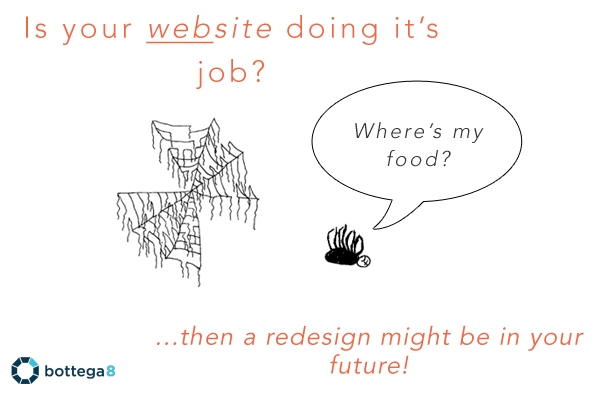Recently, we’ve gone through a redesign of our company’s website and during the process it became evident that there are certain aspects you should take into consideration when overhauling a site.
I’ve summed up a few points that we took into account when redesigning our website below:
Consider the Why & Purpose
The very first thing you should be thinking about is why you’ve made the decision to redesign your website. It’s imperative to identify clear reasons why you’re doing so. Most often these reasons correlate with your overarching business goals. Here are some questions to spend time thinking about:
- Is your current website doing it’s job? why or why not?
- Does your website reflect the current state of your company?
- Are you introducing a new brand that warrants a new website refresh?
- Are you communicating your brand’s story to your target audience?
- Are you getting traffic to your website but customers are not converting?
These are just ideas to circulate through your brainstorming process before diving into any code, wireframing, or designing. This allows all parties involved in the redesign to be aligned on the purpose and will also influence the goals you want to achieve.

Understand Your Audience
This is huge. It’s important to make sure that you evaluate who your customers and prospects are because it directly affects your website’s copy and design. If your site doesn’t have a clear audience in mind people who come to your site might be confused at what you’re offering and how it’ll benefit them.
In this post we won’t go into details about writing effective copy but luckily the folks at KISSmetrics have provided some valuable pointers for you to consider.
Outline Goals that You Want to Achieve
Once you’ve understood why you’re going to redesign your website and have identified your audience you’ll want to make sure you have clear goals to strive for. These goals should obviously be tied to your business drivers and what you want your outcomes to be. Some ideas for goals might include:
- People should easily understand what we do.
- Increase leads coming through our website
- Increase brand awareness in our industry
What’s important here is to have something that you can measure after you’ve redesigned your website. For example, measuring conversion rate of leads, traffic increase, or engagement in blog post comments (see what I did there). These are some ways to correlate your redesigned website to results and see if it worked or didn’t.
Keeping Your Goals in Mind throughout the process
The main point here is to align goals, audience, and message together. By making sure these 3 are top of mind as you’re redesign your website you’re setting yourself up for success. Yes, this is not certain because you’ll most likely have to iterate as you look at historical data but this will put you in a good position to evaluate over a clear criteria you’ve laid out. You’ll know exactly if your goals map to your results and if not you’ll have a better understanding of what to change to better achieve your desired outcome.
In Summary

At the end you want to be able to map your goals to outcomes. This becomes crucial because it provides you with knowledge whether the redesign worked. You may find out that after a couple months that nothing has changed or even your metrics that you’re tracking (i.e. traffic, sign up rates, or leads, etc) has declined. Ultimately, this will give you the data to act and that might mean mean going back to the drawing board. I’d make sure to have someone on your team who is focused on the right goals for your business and not biting off too much.
Thinking about these key points before diving into developing or designing helps you stay focused on the outcomes. I know I left out the actual specifics of designing and implementation and what that looks like but that will be a post itself. Look out for our following posts where I’ll be showing how our site is performing against the goals we set.


